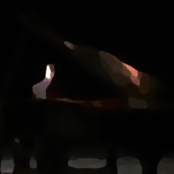Search the Community
Showing results for tags 'baroque'.
-
Hello. Posting some old works that was performed some years ago. Concerto nr. 36 in the late Italian baroque style, written to my better half! Sadly I lost the recording from the concert, so this recording is from a rehearsal. For me this second movement of this concerto is the most expressive slow movement I have written. I. Allegro II. Adagio III. Vivace (La danza dell'amore) Please tell me what you think! Performed by new baroque ensemble 2016.
-
Hello everybody, Currently, I am working on my Figured Bass skills, which I find pretty hard. To begin, I wrote the first movement of a Baroque Alto Recorder Sonata accompanied by Basso Continuo, consisting of a Harpsichord and a Viola da Gamba (or Violoncello). Recorder Sonata No.1 in C major, I. Adagio. Feedback or any thoughts would be very nice! *I just shared the 'project' file, so a part of the second movement is also shown.
-
Hello, this is my second post and my most recent music on the theme Non-sense. This is not to be taken seriously but as a musical parody, I aprecciate if you give me your feedback!
-
Here is another air for soprano and piano, based on a text my mother wrote (which I translated as well as I could). Again, the flute is used instead of the choral patch. Let me know what you think, and, if you know Italian, if the translation is accurate. Thanks! UPDATE: This piece has been changed and moved into an updated collection here ------>
-
Hello all, This is a small piece in Irish Gaelic from the 18th century (hence the Baroque tag) - the poem is a dialogue between the poet (tenor) and a priest (bass) on the subject of death and godly punishment (or forgiveness) after death. It's scored for one flute, one piano, two soloists and a cello as well as a choir with 2-3 singers per voice. Any advice is welcome, particularly on technicalities on the Cello. Cheers, Marc An_Bás_2.mp3 An_Bás_2.pdf
- 2 replies
-
- poem setting
- gaelic
-
(and 2 more)
Tagged with:
-
Fugue g minor My first piece, so only two voices. Tell me what you think!
-
This is a set of three pieces, though composed individually, that I put together as a single opus number, each reflecting an attempt to compose within a specific style. The first is a "sonata" akin to the single movement works of Domenico Scarlatti. It originally started as a possible movement for my harpsichord concerto which I later just used as a stand alone solo keyboard piece. It is playable for harpsichord or piano. The second is a movement in classical sonata form that was originally an assignment for a music theory class. It's probably the most "pedantic" of the group being in very tight sonata form. The last is a romantic style prelude. It is a piano transcription of the cadenza to the ending of Fantasy for violin and orchestra that I wrote about 5 years ago.
-
This is quite an old piece -- approximately a year old; it is relatively short and simple, and it relies primarily on the harmony, as opposed to a melody. {{I realized the continuo-parts (guitar and harpsichord) myself}} Nonetheless, I think it is a fair piece of music myself, and I thought I should share it. Let me know what you think, and do remember this is from a while ago! :)
-
A brief piece for cello and piano I quickly wrote. It is among the first of the pieces that I've written in such a style, so I'm always looking to improve. Let me know your thoughts, and thanks!
-
This is a piece for solo violin in a neo-baroque style. It's virtuosic in places but (I think) playable.
-
Interesting new format for the forums.... I've posted this awhile back, but it remains one of my better works, I think. It's a harpsichord concerto in the Baroque style, though incorporating my own idiosyncrasies within it. I initially transcribed a movement of an older piece for violin duet (the last movement) as a harpsichord concerto movement and liked the result so I composed two new movements to go with it. I hope you enjoy it.
- 4 replies
-
- harpsichord
- concerto
-
(and 3 more)
Tagged with:
-
Guys, please, I've never found it would be so difficult... I'm looking for some choral pieces written in strict mixolydian mode, but I don't want a modern one. I want those old medieval pieces, or maybe from renaissance. It just has to be mixolydian and choral. (preferrably for not too many voices...) Thanks in advance^^
- 5 replies
-
- choir
- choral music
-
(and 4 more)
Tagged with:
-
Italian Baroque And Galant School Of Music: Prinner
Sacchini posted a topic in Advice and Techniques
Hello everyone, this is my first little contribution to the forum's educational sub-board. I have become well acquainted with Baroque and Galant musical procedures in the past 6 years and I thought I would share a little of that knowledge. For those who do not know, the Baroque period, specifically the Late Baroque, spanned a period of time from 1680 to roughly 1730. The Galant Period began around 1720 and spanned up to the 1770's. A little primer on Baroque and Galant composition is needed first. The idea of music composition during the Baroque, Galant and even Classical Eras was fundamentally different from how music composition is thought of today or even in the Romantic Era. It was the Romantic Era which destroyed the institutions and thought processes that made Baroque and Galant music what it was. During Baroque and Galant the mere word "compose" or in Italian "composare" was a contraction of two words "com-" "-posare" which literally meant "put - together". It did NOT mean "create" as it means today and during Romantic times. Why is this important? Because it is the reason Formulaic writing was used during Baroque and Galant times and not during Romantic or Modern times. A music composition in 1732 was thought of as a series of "pieces" that had to be "put-together" in a certain order following the rules and conventions of the time. It was the presentation of these pieces that made a composer great. How he hid the underlying framework, how well he joined two different formulas, how good his timing was in deploying a particular formula were all critiqued by listeners of the time. This is the key to how Domenico Cimarosa wrote sixty-eight three-hour long operas during his life and Richard Wagner only wrote thirteen. Now, before the hand-wringing starts, I do understand that Wagner's works are of a much higher order of harmonic complexity and rhythmic variety but it took him a long time to compose each one because he was "creating" not "putting-together." As Dr. Gjerdingen from North-Western University, author of the book "Music in the Galant Style" said, "A professionally trained galant composer could easily compose one opera in one month." It has baffled modern composers as to how the musicians of the 18th century wrote not just with such astounding speed but also with such confidence. The simple answer? Formulas. Every professionally trained composer, especially those originating from the great conservatories of Naples knew the basic collection of formulas and progressions and it was then a measure of their talent and ability as to how they utilized the formulas. The formula that we will be discussing today is nicknamed the "Prinner" by Dr. Gjerdingen. Each formula had a nickname during the 1700's but most have been lost to us. A few like "Ponte, Monte, and Fonte" along with "Romanesca" (if you've heard Pachelbels Canon in D you are basically listening to several romanescas over and over and over again but with different variations) have survived. So what is a Prinner? There are two types of Prinners. One is the older "leaping bass" type and the more modern and streamlined "descending bass" type. However, the basic structure remains the same. http://youtu.be/9BpV3_-073A?t=1m50s The song (and the example) are in E-flat, and the clefs of the example from the top are Treble, Treble, Alto, Treble (solo) and Bass. This example by the Aria "Senti il Fato" by Nicola Porpora (who was trained in Naples) is the perfect model of a Prinner. In fact, Porpora does nothing to disguise it from its most basic form. The bottom two lines form the basic structure. The progression goes "6 - 5 - 4 - 3" in the treble (of the solo line, second from the bottom) and "4 - 3 - 2 - 5 - 1" in the bass. (Note: the "5" is optional but it was often used because it adds the great emphasis of going from 5 to 1 like a cadence). Prinners often follow the Opening Gambit of a piece or, in this case, the Opening Gambit of a soloist. (The Opening Gambit is called this because almost every piece started on some variation of 1 - 5 - 1 or 1 - 7 - 1 in the bass so it was always a gamble by the composer to get the listener's attention by the opening). Prinners are not limited to secular pieces. Giovanni Battista Pergolesi (also trained in Naples) utilizes one in the Gloria of his Mass in D-Major .http://youtu.be/SFPwrf3HsVU?t=1m4s This song is in D-Major, but the example has modulated to G-Major. Both clefs are Bass Clefs. This example is even more simple than that of Porpora (however, Porpora's should be considered the basic model of a Prinner). This portion of the song has modulated to G-Major so a quick analysis reveals the following progression in the treble "4 - 4 - 3 - 3 - 2 - 5 - 1" and the bass follows with " 4 - 4 - 3 - 3 - 2 - 5 - 1" Another example comes from the baroque composer Tomaso Albinoni of Venice from his Aria "Vien con nuova orribil guerra" in C-Major http://youtu.be/kGvScqgN0f4?t=7s This song is in C-Major, the clefs are listed. An important point to note is that the Prinner is often led to by raising 1 to 3 before starting with 4 as seen in this example. The bass goes "3 - 4 - 4 - 3 - 1 - 2 - 5 - 1" This bass line looks more convoluted than it should be and that is because Albinoni drops the 3 to a 1 between the 2nd and 3rd measures (even though its part of the same triad) for variety. The treble follows similarly to all others and if you sift through the 16th notes you will see they form "6 - 5 - 4 - 3" The trumpet line at the very top also follows "6 - 5 - 4 - 3" The next form of a Prinner is the older form which has a leaping circle of fifths bass. This is not to be confused with the circle of fifths ala Vivaldi which is ever so slightly different and is used a little differently. This is a Prinner with a circle of fifths bass. http://youtu.be/JmZKFE-qKQY?t=1m47s This example is in D-Major, the clefs are, from the top: Treble, Treble, Treble, Treble, Alto, Bass. In this example I have included my analysis table in the upper left of the actual musical score. With the leaping 5ths bass you will see that it still follows the usual "4 - 3 - 2 - 1" but in between each of these it drops a 5th so the formula becomes "4 - 7 - 3 - 6 - 2 - 5 - 1". You may be wondering what the difference is between a Prinner with a circle of fifth's bass and an actual Circle of Fifths and the explanation is: the treble lines are very smooth in a Prinner. See how the violins gradually step down little by little? In an actual Circle of Fifths such as those used by Vivaldi (and Albinoni) the treble line is broken and jagged, leaping often in opposite directions of the bass. A Prinner is smooth and gradual in its descent with the treble. The song is in F-Major, the clefs are from the top, Treble, Treble, Alto, Bass. This example is one of my own compositions utilizing one of the rules of using a Prinner. A Prinner can be followed by a second Prinner but it must differ from the first. The first Prinner is called the "Prinner Principale" and the second is called the "Prinner Riposte." I chose the modern step-wise descent for the Prinner Principale and the Leaping Bass for the Prinner Riposte. I was unable to remember or find an example of this being used, the example provided by Dr. Gjeringen in "Music in the Galant Style" was one by LeDuc I believe. However, my example illustrates how it was used. One key note: there can never be three Prinners in a row. That is a big no-no for the Galant and Baroque times. http://youtu.be/mE_J63nLllU?t=36s When I clipped these images, I kept the key signatures as the page turned for ease of viewing. I hope this is not too confusing. I am trying to keep things simple. The song is in D-Major, the example is in A-Major. This example shows the use of Suspensions. If one looks in the upper registers, one will see a series of whole notes, these are the suspensions which glide downwards as the soloists do much of the work. I have provided an analysis table for ease of understanding. This is a more traditional leaping bass form (ironic considering Dittersdorf was one of Mozart and Haydn's contemporaries). It still follows the proper bass of "4 - 3 - 2 - 1" in every other measure and Violin I in at the top makes a perfect descent from "6 - 5 - 4 - 3". The 7# is listed with a "#" because this example is set in A-Major via what the Italians called a "Minazione di Tono" or Key Ending or as Mr. Sanguinetti in his book "The Art of Partimento" calls it a "Scale Mutation". I will not discuss this concept fully, as it would require a post of similar size to this entire one but basically a Scale Mutation is a quasi-Modulation. Where a modulation shifts the song entirely into a new key, a Scale Mutation is a localized and closed event. If one looks at the example score at the very very beginning you will see a "D-Sharp" played by the Solo Viola (second from the bottom). If you listen to the link I posted this note is very obvious as a chromatic sounding note played by the viola. This one little note is what induces a Scale Mutation and a Scale Mutation must be confirmed by a cadence which is carried out by the Prinner where it ends on 5 - 1. The reason I explain this is because it shows how one simple formula can perform multiple functions in a song and often create cascading or tiering effects. Displace one formula, and you ruin the entire structure of the song. Regole (Rules) 1. A Prinner must go "6 - 5 - 4 - 3" in the upper voice and "4 - 3 - 2 - 1" in the lower voice or some variation of this in the triad of the respective degrees.. Variazione 1: Alternatively the upper voice may be in unison with the lower voice with "4 - 3 - 2 - 1". This is uncommon. 2. A Prinner may be followed up by a second Prinner of a different form but never a third. They must never be exactly the same and should vary. 3. Suspensions in the Treble may be used. Let's Test Your Knowledge! I will provide two links below to youtube videos, the top two have Modern Step-wise Prinners hidden in them (not the leaping bass). See if you can pick them out. The first one is easier since the score is provided and it is a slow tempo in the video but the second is harder because the tempo is quick and there is no score, the final piece is not too difficult. (The first video has an awful idea of a castrato's voice which is a mix of a male countertenor and a female soprano. The second video uses Phillippe Jaroussky's voice which sounds most likely identical to a real castrato's voice like Farinelli). Remember, be sure you identify the key properly in the scored piece if you want to analyze with the numeral analysis. If it modulates, you must compensate for that. Example 1: https://www.youtube.com/watch?v=p-lASnC6cG0 Example 2: https://www.youtube.com/watch?v=9K8bAWy_LXU If you discover the Prinner in the second one you will also hear one of the biggest cliche's of the 18th century a "High 2" Where the treble goes "6 - 5 - 2 - 4 - 3" where the 2 is above the 4. (If you are unsure of your answer, message me and I will tell you the answer!) :) I hope you enjoyed this little peek into the 18th Century compositional process. The Prinner is just one of many formulas I have discovered and since most of this tradition was taught orally and the masters of it are now long dead, its a game of discovery and finding examples to support the discovery. I will try to post up another formula and analyze it, such as the Romanesca or the Fonte but stay tuned until then.







